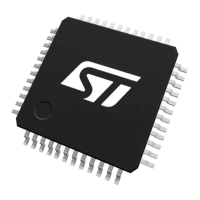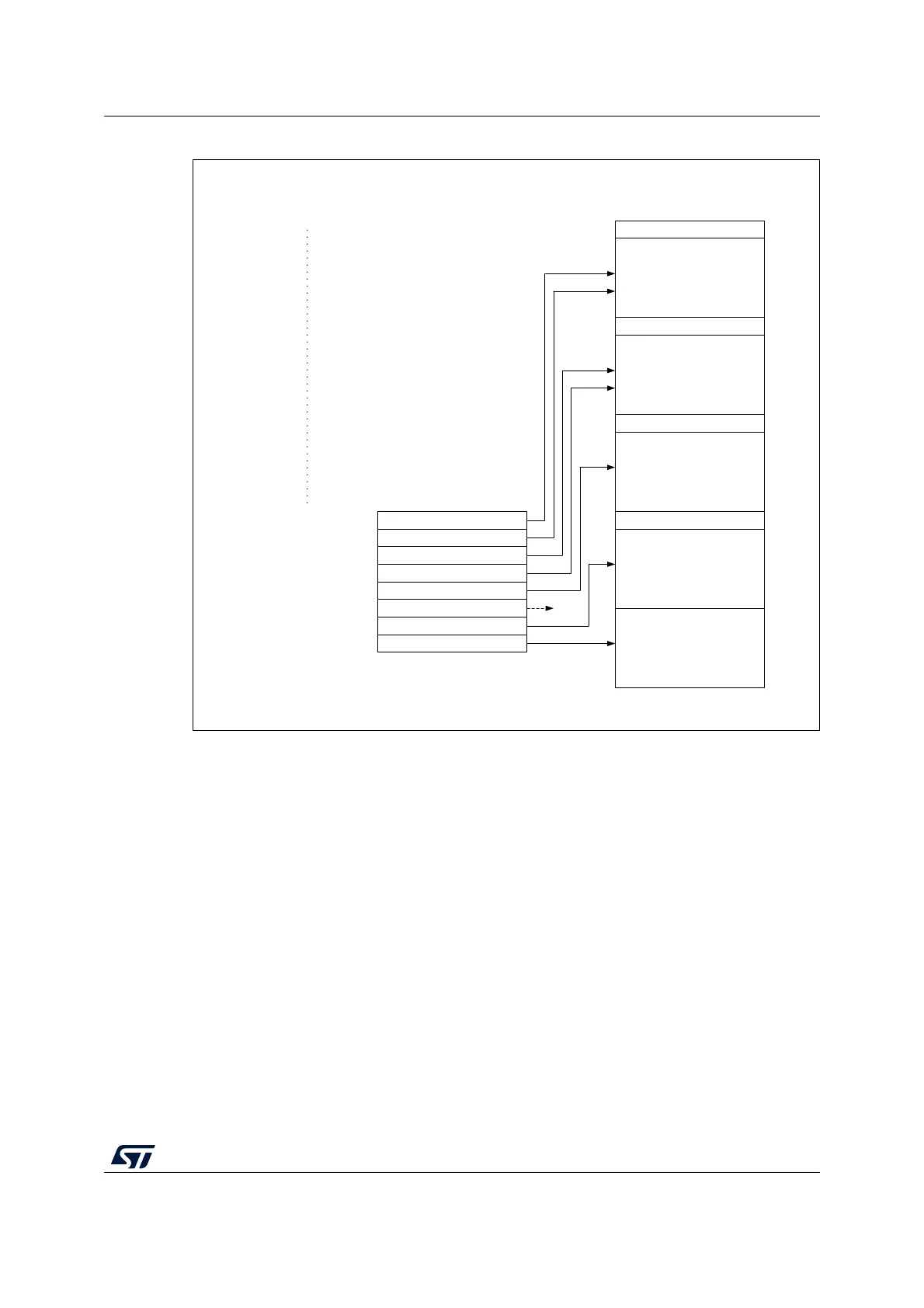RM0444 Rev 5 1269/1390
RM0444 Universal serial bus full-speed host/device interface (USB)
1307
Figure 402. Packet buffer areas with examples of buffer description table locations
Each packet buffer is used either during reception or transmission starting from the bottom.
The USB peripheral never changes the contents of memory locations adjacent to the
allocated memory buffers; if a packet bigger than the allocated buffer length is received
(buffer overrun condition) the data is copied to the memory only up to the last available
location.
Endpoint initialization
The first step to initialize an endpoint is to write appropriate values to the
ADDRn_TX/ADDRn_RX fields in the CHEP_TXBD_n and CHEP_RXBD_n registers (in
SRAM) so that the USB peripheral finds the data to be transmitted already available and the
data to be received can be buffered. The UTYPE bits in the USB_CHEPnR register must be
set according to the endpoint type, eventually using the EPKIND bit to enable any special
required feature. On the transmit side, the endpoint must be enabled using the STATTX bits
in the USB_CHEPnR register and COUNTn_TX must be initialized. For reception, STATRX
bits must be set to enable reception and COUNTn_RX must be written with the allocated
buffer size using the BLSIZE and NUM_BLOCK fields. Unidirectional endpoints, except
isochronous and double-buffered bulk endpoints, need to initialize only bits and registers
related to the supported direction. Once the transmission and/or reception are enabled,
register USB_CHEPnR and locations ADDRn_TX/ADDRn_RX, COUNTn_TX/COUNTn_RX
(respectively), should not be modified by the application software, as the hardware can
MSv32129V2
(*) indicates alternate mode.
Packet buffers
CHEP_RXTXBD_3* [TX]0x1C
Buffer for
double-buffered
IN endpoint 3
Buffer for
double-buffered
OUT endpoint 2
.
.
.
Transmission buffer
for
single-buffered
endpoint 1
Reception buffer for
endpoint 0
Transmission buffer
for endpoint 0
.
.
.
.
.
.
CHEP_TXRXBD_3 [TX]0x18
CHEP_RXTXBD_2 [RX]0x14
CHEP_TXRXBD_2* [RX]0x10
CHEP_RXTXBD_1 [RX]0x0C
CHEP_TXRXBD_1 [TX]0x08
CHEP_RXTXBD_0 [RX]0x04
CHEP_TXRXBD_0 [TX]0x00
Not used
Available buffer address range
starting from offset 0x40
Available buffer descriptor
address range
starting from offset 0x00

